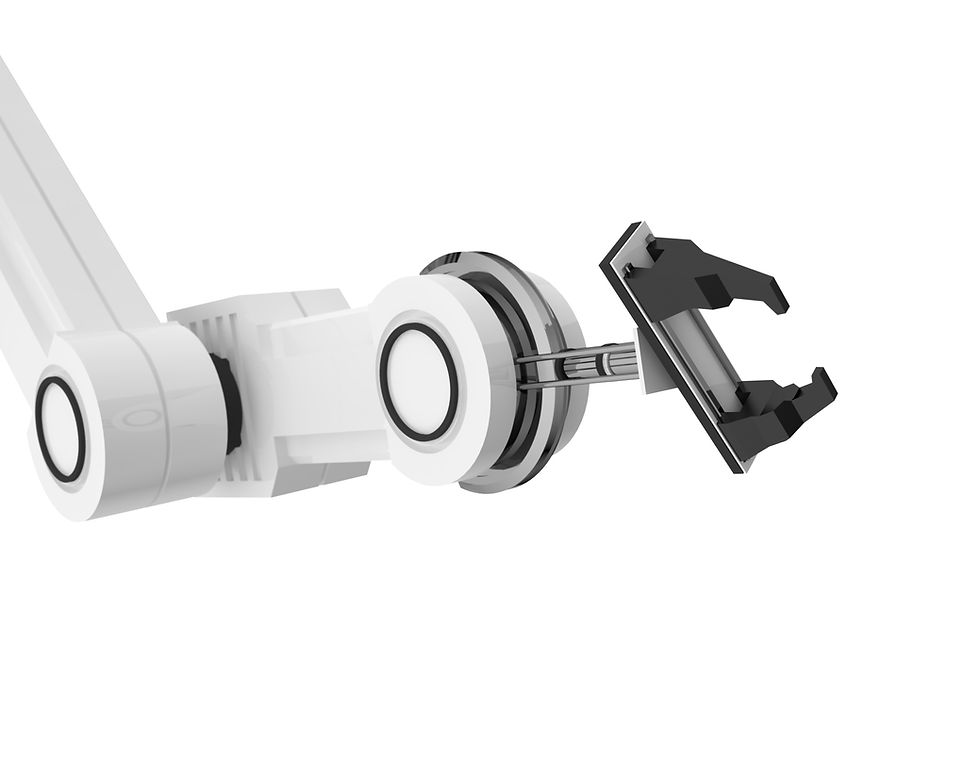Foundational pillars of Smart Enterprise
- Karan Kamal
- Oct 5, 2021
- 5 min read
Enabling the Smart, Connected Enterprise is now being perceived as the Holy Grail in manufacturing. Faced with ever evolving customer demands and the pressure of ongoing economic uncertainty – manufacturers are turning to digital transformation in pursuit of the new era of manufacturing. From more efficient operations to bringing new products to market at speed: Industry 4.0 promises to help manufacturers meet the business imperatives of the future by creating a smart, connected enterprise
However, embarking on Industry 4.0 is a complex process encompassing all parts of the organization. Realizing the true value creation potential of Industry 4.0 requires organizations to address 4 key paradigms

Foundational Pillars of the Smart Enterprise
a) Horizontal integration of value networks
In the context of Industry 4.0, horizontal integration needs to be handled at multiple levels
Shop floor: creating seamless integrations between various manufacturing functions in the shop floor (such as Order Processing, Production Scheduling, Production Control, Maintenance Management, Quality Management etc.) creates the foundation for a connected enterprise that can respond to production demands and challenges in an agile and automated manner
Across multiple manufacturing units: Integration of Level 3 systems (such as Manufacturing Execution System) of different manufacturing facilities/ factories helps stakeholders directly compare production quality, efficiency and output levels across each location. These integrations are critical if an enterprise wishes to set-up a single command center to centrally manage the resources, inventory and maintenance across different production facilities
Across the broader supply chain: A connected supply chain is considered the backbone of a robust Industry 4.0 enterprise. Industry 4.0 facilitates data sharing and automated collaboration across the entire supply chain (both upstream and downstream logistics). Third-party suppliers, vendors, customers and service providers must be securely but tightly incorporated horizontally into the enterprise’s production and logistics control systems
Key points to be considered:
As horizontal integration involves exposing production data directly to third party partners, it is important to incorporate robust cyber security standards and IP management frameworks to mitigate potential risks. While transparency undoubtedly enhances efficiency, it is important that only the right stakeholders are given access to information, and on a need-to-know basis only
b) Vertical Integration of Shop floor and Top floor: The intent is to create a closely integrated bi-directional data pipeline across all logical layers inside the organization starting from the field layer (physical equipment) to the enterprise business layer (business systems). This helps align production processes and core business processes to optimize production output and efficiency. ISA 95 provides a foundational reference model about the various systems across different levels of the organization
Key points to be considered:
In most cases, existing IT infrastructure is highly fragmented with disparate protocols, specifications and integrations. These can either be tackled through APIs (quick wins) or ‘Rip and Replace’ Strategies (for more complex, long term requirements). It is important to make the right choice of architecture and integration roadmap for realizing strategic long-term benefits.
c) Human Orchestration of Value Stream: Largely driven by the advent of new technologies, Industry 4.0 is creating new touchpoints that enhance the ways humans now interact with technologies. From simple static screen displays to virtual control of critical assets, human-machine interface (HMI) has undergone a drastic transformation. HMI will play a critical role as they make available the most valuable component of data: one that can easily be read, analyzed or acted upon by stakeholders in the organization. For instance, Unified Systems which can combine elements of interactive AR, robotics, tactile outputs, gesture recognition and voice control can eventually help technicians virtually perform complex operations in hazardous environments with zero safety risks. It is thus important for enterprises to understand how best they could leverage technologies to augment the current productivity of their workforce.
d) Integration of the Product lifecycle: With the proliferation of connected devices and sensor technologies, enterprises will need to reimagine and enable their product value chains to be better integrated across engineering, manufacturing and enterprise functions. Industry 4.0 will involve the transformation of traditional, linear product development cycles to a more iterative, dynamic and integration development cycle.

This transition will enable new business value in the form of:
Shorter production lead time: digital technologies such as 3D printing now allows for rapid prototype development that allows enterprises to test new ideas, make necessary adjustments before moving into production. This dramatically helps reduce the traditional production lead times
Enhanced R&D: Creating backward integrated feedback loop allows for enterprises to continuously gather product usage data and make necessary design changes
Product Customization: Digitizing the entire product value chain allows for agile response to customer demand and make changes to specific orders without impacting the overall production line
Conclusion
Successful implementation of Industry 4.0 requires a thorough understanding of the specific starting point across each of the above paradigms in order to identify current state and prioritize the right set of digital opportunities that add value. Assessing this starting point provides organizations with the basis for laying out a path to digitally enabled smart, autonomous enterprise
How can FutureSense360 help you?
FutureSense360 seeks to accelerate your Industry 4.0 initiatives by offering contextual, integrated & scalable blueprints and solutions.
As a first step in the process, our maturity assessment frameworks help you make a quick but detailed evaluation of current maturity state across each of the above four paradigms.
1. Horizontal integration of value networks: We evaluate the extent of digitization and collaboration across the organization’s ecosystem (both internal cross-functional collaboration as well as external partner ecosystem collaboration) and identify potential areas of intervention to reduce costs and improve efficiencies
2. Vertical integration: Our framework adopts a technology specific view to assess the extent of interconnectivity across the various systems, platforms and solutions critical to operations and business across the organization. The intent is to recommend a scalable and centralized technology architecture that can handle the evolving needs of the organization as it embarks on more digital initiatives.
3. Human Orchestration of value streams: We identify current areas of inefficiencies in your labor dependent processes and define an optimal technology suite that can help you drive greater levels of resource utilization and productivity
4. Integration of the Product Lifecycle: We evaluate the entire product lifecycle to assess your current levels of maturity to help you in the following ways:
Identify new product competencies and augment your product strategy roadmap
Identify new areas for revenue maximization and cost optimization
Identify potential areas of integration across product development life cycle that includes conceptualization, development, testing, manufacturing and after market
Define new practices to accelerate product development and testing
The combination of our maturity frameworks and implementation capabilities means that you can rely on us as your trusted partner as you embark on your smart enterprise transformation journey.



Comments